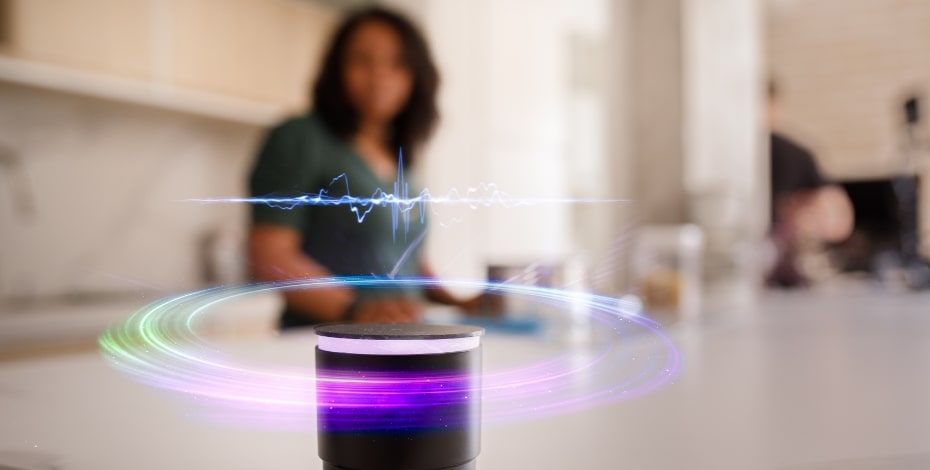
Alexa, please show me the exercise

Physiotherapy Research Foundation Seeding Grant recipient Dr Peter Nicklen talks about the use of intelligent internet devices like Alexa in delivering rehabilitation programs.
New intelligent internet technologies like Alexa, the voice-controlled virtual assistant developed by Amazon, offer novel ways to deliver exercise and other therapies to patients in their homes.
The approach may have some advantages over other internet-driven interventions, such as telehealth, due to the interaction between the patient and the device and the ability of the device to provide tailored information and exercise based on the responses given by the patient.
‘It’s an interesting space and it’s continuously evolving,’ says Monash University researcher and lecturer Dr Peter Nicklen APAM.
‘It’s the next step on from telehealth.’
Peter is working with Dr Paul Jansons, Associate Professors Peter Malliaras and David Scott as well as Professor Terry Haines to evaluate the use of Alexa-based interventions in delivering exercise and education programs.
Last year he received a Physiotherapy Research Foundation Seeding Grant to support a small feasibility study comparing telehealth delivery to Alexa-based delivery of an exercise intervention for patients with rotator cuff tendinopathy.
Rotator cuff tendinopathy is a common musculoskeletal condition and is the most common cause of shoulder pain.
While the guidelines for care recommend education and exercise as the first step in treatment, many patients are directly referred by their GP for imaging or to a surgeon rather than to a physiotherapist.
However, Peter says that many of these patients would respond well to completing an education and exercise program instead of more expensive and invasive treatments.
His study will look at the outcomes of and engagement with an exercise and education program delivered via Alexa compared to a telehealth program and an active control in patients presenting with rotator cuff tendinopathy.
‘There are a lot of people who do respond really well to exercise alone.
‘If we could capture those people, give them an Alexa-guided rehab program and reduce their burden on the health system, then that would be incredible.
‘Those who don’t respond well could continue with further interventions or more interactions with healthcare practitioners,’ Peter says.
The feasibility study will consist of three groups of 12 participants presenting with rotator cuff related shoulder pain.
One group (the intelligent internet group) will receive a 12-week-long program of high-quality education about rotator cuff tendinopathy and an exercise program, both delivered via Alexa, while a second group (the telehealth group) will receive the same program delivered by a physiotherapist via video sessions.
These will be compared to an active control group supplied with information about activity modifications and information about rotator cuff related tendon pain but no active intervention.
Six- and 12-month follow-ups with the participants are also planned.

Dr Peter Nicklen is evaluating the use of intelligent internet devices such as the Alexa for delivering rehabilitation programs.
Alexa will be programmed to ask the participants in the intelligent internet group about their pain levels and will remind them to do their exercises three times a week for 12 weeks.
The device steps the participants through the exercise program, monitoring their pain and exertion levels and adjusting the program as required.
A physiotherapist will remotely monitor the progress of the participants and will contact a participant if they cease participation for longer than a week.
Participants in the telehealth group will take part in six telehealth sessions over the 12-week intervention, led by a physiotherapist who will adjust the program for individual participants based on their pain and exertion levels.
This group will also be asked to do the exercises three times a week over 12 weeks.
The primary outcomes will focus on the feasibility of using the Alexa technology this way—for example, whether the participants completed the 12-week program, if they enjoyed it, how well they adhered to and retained the program and whether they had any adverse experiences with the technology or program—and compare that to the telehealth group.
‘Alexa collects and stores the information from the participants’ responses.
‘It gives you a log that we can also use to see how they’re going,’ Peter says.
The study will consider economic outcomes—health costs across the study period—as well as clinical outcomes including pain, function, quality of life, kinesiophobia and perceived change to the injured shoulder.
‘These are obviously less relevant, because we’re not trying to test the effectiveness of Alexa at this point. It’s not a big enough study,’ he says.
The Seeding Grant funding will help to pay for the Alexa devices and for the physiotherapist monitoring the participants and conducting the telehealth sessions as well as supporting the use of the Alexa devices in the study.
If the feasibility study outcomes are positive, Peter hopes to complete a larger study to validate the effectiveness of using Alexa to deliver exercise programs.
‘The goal of a bigger study would be to look at the effectiveness of Alexa as a rehab tool or a rehab method and whether it is a cost-effective way to deliver this,’ he says.
Ultimately, Peter says, this technology could be used to deliver a range of rehabilitation programs to patients with tendinopathies and other injuries that respond well to exercise-based interventions.
© Copyright 2025 by Australian Physiotherapy Association. All rights reserved.





